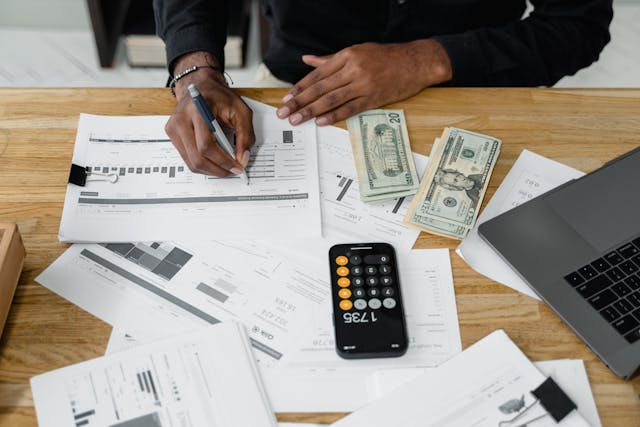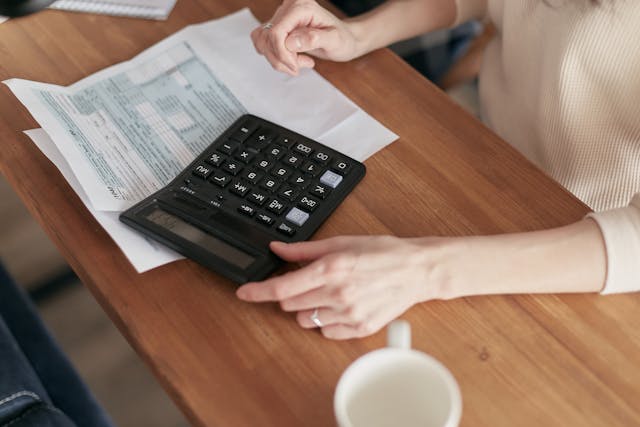.png)
Why do rental properties continue to attract investors, even in uncertain times? The answer lies in their reputation as a relatively safe and stable investment.
Unlike the volatility of stocks or other assets, real estate offers consistent rental income and tends to appreciate over time, making it a reliable hedge against inflation.
That said, real estate isn't without its risks. Unexpected repairs, maintenance costs, and vacancies can all strain your finances.
Over-leveraging, where the cost of your mortgage outweighs rental income, can lead to financial trouble. Plus, property values aren't immune to market downturns, poor location choices, or shifts in the economy.
In this article, the experts at Rockbridge Real Estate will walk you through the key factors that influence property value, with valuable tips on how to protect and maintain your investment over the long term. Let’s dive in!
Understanding Appreciation and Depreciation
Understanding the dynamics of property values is crucial for landlords aiming to maximize the profitability of their investments.
Appreciation and depreciation are two key factors that determine the value of a rental property over time.
What Is Appreciation?
Appreciation refers to the increase in the value of a property over time. This growth can result from various factors, including the following:
- Market Demand: An increased rental demand in a particular area often drives up property values.
- Location Improvements: The development of infrastructure, such as new schools, parks, or public transportation, can significantly boost property values in the surrounding area.

- Economic Growth: A thriving local economy with ample job opportunities attracts more residents, increasing demand for housing and property values.
- Property Upgrades: Renovations, landscaping, and other improvements can enhance a property’s appeal and value.
What Is Depreciation?
Depreciation is the decline in a property’s value over time due to factors such as the following:
- Physical Deterioration: Normal wear and tear, such as aging roofs, plumbing issues, or outdated appliances, diminish the value and appeal of a property.
- Functional Obsolescence: When a property’s design or features no longer meet modern standards, such as a lack of open floor plans or energy-efficient systems, its value decreases.
- External Factors: Declining neighborhood conditions, high crime rates, economic downturns, or environmental changes can all lead to property depreciation.
Depreciation negatively impacts real estate investors because it reduces a property's market value over time, potentially lowering its rental rates, resale price, and overall return on investment.
Luckily, landlords can deduct depreciation, reducing their taxable income and improving their cash flow.
However, unaddressed depreciation can lead to higher maintenance costs, functional obsolescence, and diminished tenant appeal over time.
That’s why investors must be proactive with property management and strategic improvements to preserve and enhance the value of their properties over time.
How to Calculate Depreciation
Calculating property depreciation is not simple. But here’s how you can do it:
Determine the Adjusted Cost Basis of the Property
There are two important factors to consider when calculating the cost of a property:
It’s at-purchase value: The total expenses incurred when purchasing the property, including legal expenses, closing fees, and mortgage interests.
However, the cost of the land where the property sits must be subtracted.

Improvements made: After calculating the total cost of the property, you must add in the cost of property improvements made in a given year. This includes landscaping services, repairs, and renovations.
For example, if you paid $1 million for your property, and add up closing costs and legal fees of $30,000, plus $5,000 in renovations, then subtract land costs of $50,000, your property’s cost basis would be $985,000.
Calculate the Annual Depreciation
Depreciation is calculated using the Modified Accelerated Cost Recovery System (MACRS).
There are two methods typically used to calculate property depreciation: the General Depreciation System (GDS) or the Alternative Depreciation System (ADS).
GDS applies to most properties, rental or not, while ADS is only applicable in the following circumstances:
- When a property has been used for a qualified business purpose 50% of the time or less in the past year.
- When a property is primarily used for farming.
- When a property has a tax-exempt use.
- When a property had been financed by tax-exempt bonds.
- When using GDS, the recovery period for residential rental properties is 27.5 years.
Depreciation is then calculated by dividing the property’s cost by the recovery period.
Taking the example used above, if the cost basis for your property is $985,000, by dividing it by the 27.5 recovery period, you’ll get a $35,818 depreciation cost. This is known as the straight-line depreciation method.
However, when using ADS, the recovery period for a residential type of property can be 30 or 40 years, depending on when the property was first placed in service.

Investors who use ADS should consult with an accountant to determine the best way to calculate the depreciation of their properties to avoid confusion.
Top Tips for Maintaining and Increasing the Value of Your Rental Property
To prevent depreciation and maximize your property’s value, proactive management is key. Here are a few practical tips:
- Regular Maintenance: Keep up with repairs, landscaping, and general upkeep to ensure the property remains functional and appealing.
- Upgrade Key Features: Focus on impactful upgrades, like modern kitchens, updated bathrooms, and energy-efficient appliances, to boost value and attract tenants.
- Enhance Curb Appeal: Improve first impressions with quality landscaping, exterior paint, and well-maintained facades.
- Stay Informed: Monitor local market trends to make timely decisions on rent adjustments and property upgrades.
- Address Structural Issues: Fix foundation cracks, roof damage, or plumbing issues quickly to avoid depreciation.
- Diversify Revenue: Add amenities like storage units, parking, or laundry to increase income and property value.
- Monitor Local Developments: Watch for neighborhood changes that could affect property values.
- Partner with a Property Manager: A skilled manager can help with maintenance, tenant screening, and value-enhancing improvements.
Bottom Line
Appreciation and depreciation play a pivotal role in shaping the value of rental properties.
By understanding these concepts, knowing how to calculate the value of your property accurately, and implementing strategies to maintain and enhance its value, you can ensure long-term profitability and growth.
If you need help calculating the depreciation of your Columbia rental property, contact Rockbridge Real Estate!